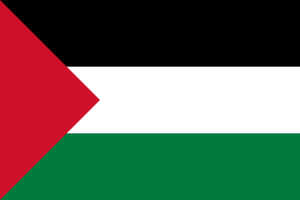Language/Hijazi-arabic/Grammar/Plurals
Hi Hijazi Arabic learners! 😊
In this lesson, we will focus on the plural forms of nouns in Hijazi Arabic. Understanding plural forms is an essential part of grammar for any language learner. Once you've mastered the singular forms of nouns, it's time to move on to the plurals. By learning the plural forms, you'll be able to form more complex sentences and communicate more effectively.
Finish this lesson and explore these related pages: Questions, Future Tense & Negation.
Basic plural forms[edit | edit source]
In Hijazi Arabic, there are two basic ways to form plurals:
Plural through doubling[edit | edit source]
One of the most common ways to form plurals in Hijazi Arabic is by doubling the singular form. For many nouns, this means that the ending vowel is repeated twice. For example:
| Hijazi Arabic | Pronunciation | English |
|---|---|---|
| دار | dar | house |
| ديار | diyar | houses |
As you can see, to form the plural of dar (house), we simply add the syllable ya at the end of the word.
Another example:
| Hijazi Arabic | Pronunciation | English |
|---|---|---|
| كتاب | kitaab | book |
| كتب | kutub | books |
In this case, the plural form of kitaab is kutub, with the doubling of the last consonant.
Note, however, that not all nouns form the plural by simply doubling the singular form. For example, nouns with singular forms ending in consonants often require additional letters to form a plural:
| Hijazi Arabic | Pronunciation | English |
|---|---|---|
| مصرف | masraf | bank |
| مصارف | masaarif | banks |
Here, the singular form of masraf (bank) ends in a consonant. To form the plural, we must add the a sound after the consonant, resulting in masaarif.
Plural through sound changes[edit | edit source]
Another way to form plurals is by making sound changes to the singular form. For example:
| Hijazi Arabic | Pronunciation | English |
|---|---|---|
| جد | jed | grandfather |
| أجداد | ajaadaad | grandfathers |
In this case, the singular form of grandfather is jed. To form the plural, we replace the d with daad, resulting in ajaadaad.
As you can see, forming plurals in Hijazi Arabic can involve a number of different techniques. Let's look at some more examples:
| Hijazi Arabic | Pronunciation | English |
|---|---|---|
| باب | baab | door |
| أبواب | abwaab | doors |
| قاعة | qaa'a | hall |
| قاعات | qaa'aat | halls |
Irregular plural forms[edit | edit source]
Of course, not all plural nouns in Hijazi Arabic follow a predictable pattern. There are many irregular plural forms that must be memorized individually. Here are some examples:
| Hijazi Arabic | Pronunciation | English |
|---|---|---|
| رجل | rajul | man |
| رجال | rijaal | men |
| مكتب | maktab | office |
| مكاتب | makaateb | offices |
| طفل | tifl | child |
| أطفال | atfaal | children |
As you can see, there is often no clear pattern to the formation of irregular plurals. These plurals must be memorized through practice and repetition.
Examples in context[edit | edit source]
Here is a conversation between two friends, using plural nouns in their dialogue:
- Person 1: الغرف في الفندق جميلة جدا (alghuruf filfunduq jameela jiddan) (The rooms in the hotel are very beautiful.)
- Person 2: كم سعر الأسرة (kam si'ru al'usra)? (What is the price of the beds?)
- Person 1: سعر الأسرة هنا ٥٠ دولار لليلة الواحدة (si'ru al'usra huna khamsun dolara lil laylat alwahida). (The price of the beds here is 50 dollars per night.)
In this dialogue, the speakers use the plural form of "rooms" ("alghuruf") and "beds" ("al'usra") to discuss the accommodations at a hotel.
Additional resources[edit | edit source]
To practice forming plural nouns in Hijazi Arabic, you can find native speakers on Polyglot Club and ask them any questions. Additional grammar resources can be found on the Grammar page.

